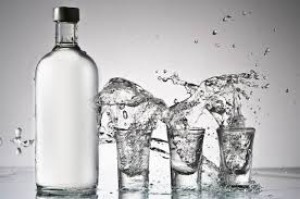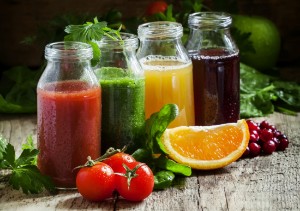Which alcohol dilutes the blood, and which &8212; thickens: an overview of the effects of 4 popular alcoholic beverages
 Studying the effects of alcohol on the cardiovascular and circulatory systems explores a huge number of factors and parameters. A universal algorithm for the assimilation, cleavage and excretion of alcohol is known.
Studying the effects of alcohol on the cardiovascular and circulatory systems explores a huge number of factors and parameters. A universal algorithm for the assimilation, cleavage and excretion of alcohol is known.
Modern research claims that moderate consumption of certain alcoholic beverages may even reduce the risk of developing cardiovascular diseases.
Nevertheless, the parameters of this process will be determined by the composition of a particular alcoholic beverage, the level of ethanol content, etc. One of the important points in studying the effect of alcohol on the human body is the level of blood viscosity and the ability of alcohol to dilute it and prevent further thickening. Why is this happening?
Let's consider in detail the universal and special cases of alcohol's effect on the viscosity of human blood. We will also discuss what other blood parameters alcohol affects and explain the possible consequences of abuse.
Content
How does alcohol affect blood viscosity?
As already mentioned, the algorithm of alcohol exposure and excretion from the body is known and universal. The first half hour after admission is characterized by improving well-being and reducing blood viscosity .
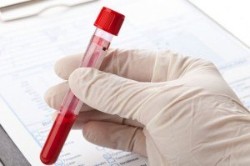 Blood thinning is due to the properties of alcohol. Once in the body and attracting the available liquid, alcohol helps to reduce blood viscosity and improve blood flow.In this regard, it is possible to diagnose the following external manifestations:
Blood thinning is due to the properties of alcohol. Once in the body and attracting the available liquid, alcohol helps to reduce blood viscosity and improve blood flow.In this regard, it is possible to diagnose the following external manifestations:
- Redness of the skin;
- Mood improvement and well-being;
- Slight increase in body temperature;
- Increased urge to urinate.
After some time, during the decay of ethanol, reverse processes occur. Substances resulting from decomposition are recognized by the body as poisons. By removing them, the body releases a large amount of fluid. As a result, blood viscosity increases and the condition worsens. They are being diagnosed the following conditions:
- Dehydration, dryness in the mucous membranes, desire to drink;
- The appearance of puffiness on the face or limbs;
- Persistent headache, dizziness, migraine.
Other facts about the effects of the cardiovascular system
In addition to affecting blood viscosity, alcohol can affect many properties of body systems. Moreover, this effect can be both positive and harmful.
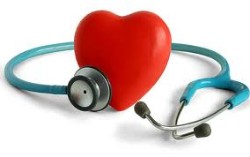 In general, culturally limited consumption of high-quality alcohol leads to positive properties, and unlimited excessive consumption of low-quality and counterfeit alcoholic beverages leads to negative ones.
In general, culturally limited consumption of high-quality alcohol leads to positive properties, and unlimited excessive consumption of low-quality and counterfeit alcoholic beverages leads to negative ones.
In addition, alcohol with a high sugar content is usually more difficult to remove and has a more severe effect.
Towards a positive impact with moderate consumption of high-quality alcohol, it should be attributed:
- Strengthening of the walls of blood vessels ;
- Vasodilation ;
- Relaxation of the nervous system ;
- Improving sleep quality;
- Prevention of cholesterol deposition;
- Improving the quality of digestion.
To the negative impact should be attributed to:
- The development of hypertension due to alcohol consumption;
- Harmful effects of ethanol breakdown products on the liver and kidneys;
- Reduction of reproductive capabilities of the body;
- Depression of the lymphatic and nervous systems.
Anyway, most experts do not recommend completely excluding alcohol from the diet, but alcoholic beverages included in the diet must meet certain requirements , namely:
- Preference should be given to high-quality strong alcohol and wine;
- Alcoholic beverage must meet the individual characteristics of the body;
- The consumption process should be treated no less demanding, as well as the choice of a drink;
- Avoid frequent consumption.
One should not forget that the process of alcohol assimilation is determined by the individual characteristics of the body.
Review of 4 specific drinks
It is known that various alcoholic beverages have different effects on the body as a whole and the blood viscosity index separately. The same strength of alcoholic beverages will not mean identical effects on the body at all.
Factors such as alcoholic beverage components, sugar content, distillation and manufacturing process, compliance with production conditions and technologies, etc. also have a significant impact. So which alcohol will be the most beneficial?
1. Wine
Wine is a traditional drink of healthy people. This fact was the basis for studying the effect of wine on the body. Over the course of numerous studies, scientists have obtained, interpreted and systematized extensive knowledge about wine. In the context of the benefits and harms of wine, it makes sense pay attention to the following facts:

- Wine dilutes the blood , strengthens the walls of blood vessels, improves blood flow;
- Wine expands the vessels and prevents thrombosis.
- When choosing from red and white for the benefit of the heart and blood vessels, preference should be given to red wine;
- The most useful wine &8212; dry;
- Consumption should be limited to 175 &8212; 350 ml during one meal;
- Daily dose of dry red wine for preventive therapeutic consumption &8212; 175 ml;
- Wine is best consumed with products that enhance its taste and beneficial properties;
- In most cases, red wine is more useful for men, white wine for women;
2. Cognac
Cognac &8212; another one a drink useful for the cardiovascular system . Its effect is somewhat similar to that of wine, but there are significant differences:
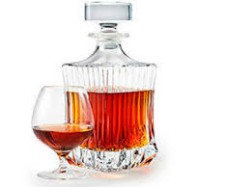
- Firstly, the alcohol content differs. As a result of this difference, the recommended dosage will be reduced to 50-100 ml for one meal;
- Secondly, cognac more clearly counteracts the development of cholesterol deposition;
- Thirdly, cognac, subject to limited consumption, has a milder effect on the nervous system, improves the quality of sleep;
- Limited quantity cognac dilutes the blood and leads to a decrease in blood pressure.
3. Vodka
The disadvantage of vodka is that this drink requires the most moisture when excreted from the body. As a result, not only severe dehydration occurs, but also the blood viscosity level increases significantly . Thus, vodka thickens the blood . In addition, the risk of thrombosis increases.
Despite this, vodka in small doses is considered by experts to be quite acceptable for consumption as a drink. It should be preferred to other similar wheat drinks: whiskey and low-quality moonshine.
4. Beer
Traditionally perceived as a light and almost harmless drink, beer has a negative effect on the body. No, of course, a glass of beer on a hot summer day will not only not do much harm, but also contribute to the secretion of gastric juice and better heat transfer. At the same time, the abundant and frequent use of &171;foam&187; is very harmful. Harm is caused by the following factors:
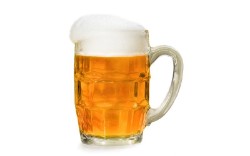
- The density of beer and the traditionally consumed large volumes of this drink make it difficult to remove it from the body;
- The substances contained in beer lead to a decrease in testosterone levels;
- Beer consumption leads to blood thickening and to the development of hypertension;
- Beer abuse threatens the development of the syndrome &171;beer&187; (&171;pork&187;) heart .
Rules of use for harm reduction
The basic rule of drinking alcohol to reduce the harm from it is limited cultural consumption. A responsible consumption rate is provided for each drink.
In general, for wine it will be 175-350 ml, for strong alcohol &8212; 50-150 ml, for beer &8212; no more than 1 liter.
The recommended dosage implies that when consuming the specified amount of alcohol, the health risk will be minimal. Accordingly, in the case of consumption of healthy alcohol, the benefit will be more significant than the harm caused.
In addition, there are general rules based on everyday logic. They should not be neglected, even if the dosage recommendations are not followed. These include the following:
- Avoid alcohol consumption in the heat, in the sun, in stuffy rooms with insufficient fresh air;
- Avoid smoking, including passive smoking, when consuming alcohol;
- Consume alcohol only in pleasant company;
- Snack &8212; accompany alcohol intake with delicious and healthy food;
- Provide access to fresh air &8212; for better absorption and easier removal from the body.
Other important recommendations
It is possible to lower blood viscosity without drinking alcoholic beverages. For this, preference should be given relevant product groups .
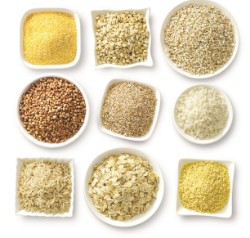 The most useful products include:
The most useful products include:
- Fresh seasonal fruits, vegetables, root vegetables and greens;
- Citrus fruits and foods with a high content of vitamin C;
- Porridge;
- Dairy products ;
- Low-fat meat;
- Fish and seafood.
These products not only reduce blood viscosity, but also have many other useful properties.
- For example, fresh fruits and vegetables in season are the most complete source of well-digested vitamins. The most useful are hand-grown ones, but others are also suitable, the appearance and flavor properties of which can be mistaken for natural ones.
- Different porridges are useful for digestion, vascular condition, hair, etc.
- Dairy products, in turn, are indispensable as a source of calcium.
- Fish and seafood contain a huge amount of essential substances, vitamins and trace elements (calcium, zinc, iron, phosphorus, etc.).
Useful video
We suggest watching these videos for a detailed introduction to the topic:
Conclusion
Thus, the effect of alcohol on the body in principle and the state of blood viscosity in particular is considered. The advantages and disadvantages of various drinks are analyzed, as well as tips for consuming each of them.
From all of the above, it should be concluded that dry red wine and cognac have the greatest benefits for the body. To improve blood viscosity indicators, it is necessary to adhere to the consumption of the food groups listed in the relevant section.
The best result can be achieved through the use of an integrated approach that includes giving up bad habits, preferring high-quality alcohol, an orderly, well-chosen diet and outdoor exercise.

